Learn the best 7 ecommerce store development stages here in this blog.
Through our previous blogs, you may be aware that starting a ecommerce business is an easy process and you can get a huge amount of profit if it is planned well. As we have already mentioned, ecommerce store development is an easy process, but, do you know about the ecommerce store development stages that take place in order to create an attractive online website?
7 Stages Of Ecommerce Store Development
1) Sharing Ecommerce Store Development Ideas

There are many benefits of sharing thoughts at work. Every time you share thoughts with others and have an exchange with them you improve. There’s a characteristic trade of thoughts there and no single thought is unique.
By sharing thoughts and co-operating, everybody included advantages and gets somewhat back. Without making it comprehended what we’re doing and considering, it’s inconceivable for others to add to that information. New and better things left offering thoughts to others.
One individual can never have a thought that is great. By sharing your thoughts at work, you are presented with a side that you may have never thought of. It will also help you to avoid many problems that are faced by other ecommerce store development process.
Some of the challenges faced by new businesses:
- Branding & Marketing – Getting people to come to an ecommerce site and make a purchase involves heavy costs due to branding and marketing.
- Declining Margins – Ecommerce market has become even more competitive with the arrival of many new players. Customers are being pampered with a variety of discounts, offers, and easy return policies. This has led to very low profit margins.
- Logistics & Supply Chain – Logistics failure in any area can mean detrimental damage to a startup’s future and can hurt the brand overall. Add to this the need for a guaranteed return policy. Getting this right is a challenge.
- Tax-Related Issues – The tax rate system of the Indian market is another factor for a lesser growth rate of ecommerce in India in comparison to other developed countries like the USA and UK. In those countries, the tax rate is uniform for all sectors whereas the tax structure of India varies from sector to sector. This factor creates accounting problems for the Indian online business companies.
- Touch And Feel – Indian customers prefer to buy products in person, and this poses a challenge for companies that sell items such as apparel, handicrafts, and jewelry. These businesses must find ways to sell their products despite the fact that customers want to see and touch them before making a purchase.
Read More: Why startups are losing its efficiency?
2) Working Around Based On Ecommerce Store Development Platform Needs
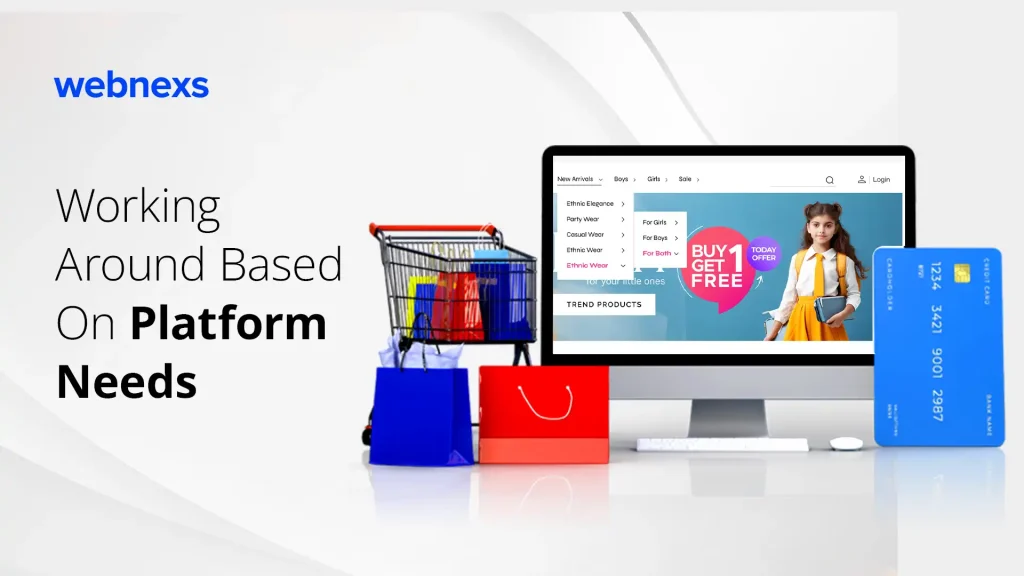
a) Research and Strategy
The key aspect while creating an Ecommerce website is having clear communication between the Ecommerce Store Development Company and the client. It is more important for the developers and the designers to have a clear understating of the company and also the product that the client is manufacturing.
Identify your target audience and the keywords they may use to find your product or company in the market. This information will help you easily connect with your customers.
b) Planning
Every business needs a proper business plan to achieve success. Planning is crucial. You must define all the requirements for your new ecommerce store development and its participants. Consider your website’s requirements.
To enhance user experience, product content, search results, and landing page effectiveness, you can use Google Analytics tools. By analyzing customer behavior on your website, you can gain insights into how they find your online store, which pages they visit, and how long they stay. This knowledge will allow you to optimize your store for better performance.
c) Design
During Ecommerce store development process, your website is the essential visual representation. The impression that you create through the looks and design of your website is the best way to attract many potential customers.
A professionally designed website attracts lots of customers and increases credibility. Customers are more likely to make a purchase if the site features an attractive style and pleasing design. Otherwise, they may assume that the website’s products will not meet their expectations.
A good website design will also play a key role in determining usability; the products they’re looking for will have a direct impact on how many site visitors actually convert into buyers. So, a good design website is capable of bringing lots of revenue towards your store.
d) Migration and Launch
To launch the website, you need to take the final step of moving it from the development server to a live server. You should then revisit each of the areas mentioned earlier and perform a final test to ensure that everything is working correctly, the brand message is effectively communicated, and the navigation is smooth and directs the user to make a purchase. Use transitional words such as “then” and “should” to guide the reader through the process.
During ecommerce store development plan, you should divide the process into three main areas: Research and Strategy, Planning, and Information Architecture. Ecommerce Partners created a comprehensive outline of this plan called the Ecommerce Requirements Specification or ERS. The ERS comprises the fundamental components that make up your website, from start to finish.
Reference Blog: Ecommerce Solution for Small Business for their startup journey
3) Online Store Development Designing

To design an Ecommerce website, you need to go through three processes: Wire Framing, Live Designing, and Usability. These processes determine the website’s design, functionality, and usability.
1. Wireframing
A wireframe is the visual representation of a user interface. It is done by UX Designers to define the hierarchy of things on a screen and communicate what the products on that page should be based on user needs. It is the right way to design a website service at the structural level.
Designers can create wireframes by hand-drawing them or by using software like Microsoft Visio to create them on-screen.
We use wireframes in the early stages of ecommerce store development to establish the basic structure of a page before adding visual design and content. Make the wireframe in the early stages of the project to obtain approval from users and clients on key web page layouts and the navigation page. This helps build confidence for the developers to move forward.
At the same time, customers may find it difficult to understand the wireframes as they do not include any design or technical details. Developers must convert the wireframes into a design to make it easier for customers to grasp the concept.
When adding material, it may initially be too much to fit within the wireframe layout. The designer and copywriter will need to work closely together to make it fit.
2. Live To Design
After obtaining approval from the client for wireframing, the subsequent step involves live designing, which involves implementing the ideas discussed in wireframing. The purpose of live designing is to create a website that can be launched.
We will make changes according to the client’s choice to redesign the Ecommerce website. We will also add or remove features to ensure the perfect end product.
3. Usability
The user experience is the main focus of usability. Making a product usable is just one aspect of designing for the user experience. Usability enables people to achieve their objectives easily. We will create the website to ensure that customers can access everything comfortably.
“A good design is pleasurable, thoughtfully crafted, makes you happy, and gets you immersed”
4) Design Integration With The Ecommerce Store
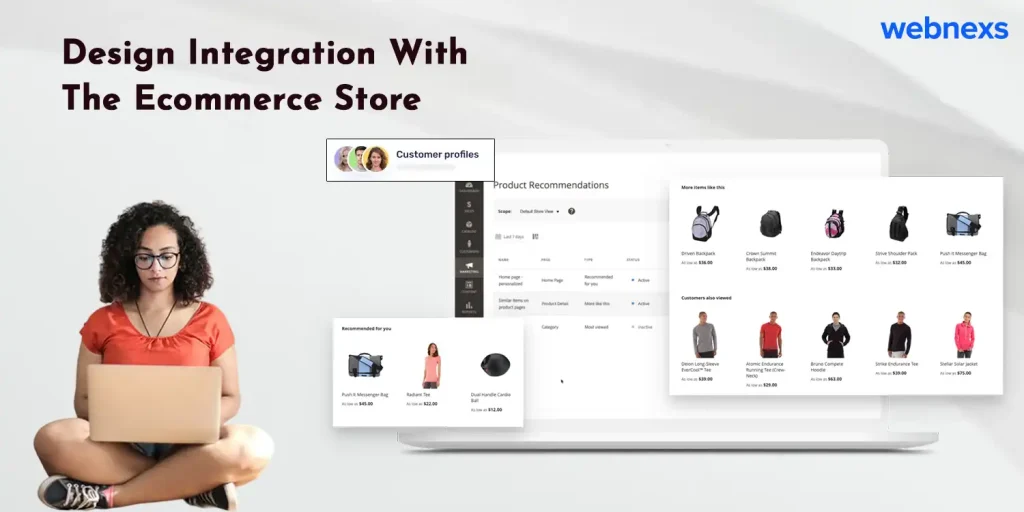
Design integration, also referred to as design customization, involves designers creating a set of themes for a website, from which the client can choose their desired theme to create their website.
The client can provide a set of reference sites for the website design during the customization process, and the developers can use these references for ecommerce store development to create a website that meets the client’s preferences.
Generally, design integration determines the looks and the functionality of the website. Every single design feature of the website will be created only during the integration process. These are some of the steps that will take place during the design integration process.
- Setting up of the working environment
- Category Landing Pages
- Product Landing Pages
- Checkout Pages
- My account Pages
- Order history Pages
- Overall Site Front-end Pages
Reference Blog: Ultimate 7 step guide to build your Ecommerce store to success
5) Shipping Integration Along The Ecommerce Store Development Process
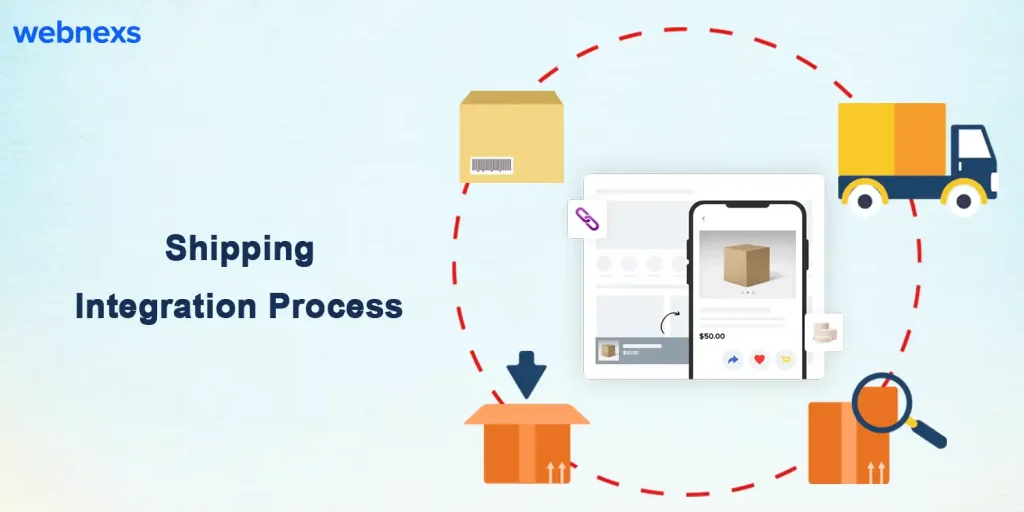
Delivering products to customers on time can be a challenging task. You can improve your delivery process by shipping purchases promptly. Integrating shipping into your operations streamlines the process and simplifies your work. Poor shipping integration is responsible for over 70% of abandoned shopping carts. Therefore, ensuring efficient shipping is critical to customer satisfaction and retention.
Customers frequently look for many different items when shopping online, but one of the most important thing that they look for is how a company handles the shipping. Ecommerce shipping solutions are the prime aspects that consumers look for.
Consumers want shipping options that show their charges and taxes, thereby providing them with an understanding of the shipping rates and the various elements associated with purchasing items online.
Consumers also want to know that shipping rates are kept simple. They do not want to feel as though they are being overcharged when they can pay less elsewhere. Some companies even consider free shipping as a promotional item to ensure that consumers are satisfied with their shipping applications.
It is important that companies clearly explain the policies with respect to their shipping. Putting everything on the product page ensures that consumers are able to effectively process their order effectively and efficiently, while also making sure that the applications are running as smooth as possible.
When a customer comes into your store for buying something from your store, the immediate thing they will do after choosing the product is to check the shipment integration.
Your shipping partner should provide you some features like tracking the orders – calculating the speed of the shipment, Insurance options, live rates integration, Real-time carrier rate, and many more.
Importance Of Shipping Integration
Here are some of the things that you need to consider while choosing a Shipment partner in ecommerce store development:
- Should have the ability to calculate the real shipping prices based on the real-time information provided by FedEx, DHL, and UPS online tools
- Must have the freedom to set and create your own shipping prices and methods
- Should have the access to directly print labels for your single or bulk orders from your online store for major carriers.
- Need to have the ability to make slight changes in the carrier shipping prices, generally by a percentage.
- Should automatically send shipping tracking information to the customers through email and notify any changes during the delivery process in order to reduce the service calls from customers.
- The customers should have the ability to check shipping options and rates and choose any of the available shipping options during checkout.
- You should be able to manually calculate shipping rates by determining the number of items ordered, total weight, and invoice amount based on the destination zip code or country.
- Should avail free shipping on certain orders over a specific amount limit or can also set handling free option for certain products.
- It should allow you to specify shipping options for your products.
Reference Blog: Top Ecommerce Website features needed for your Ecommerce Store
6) E Commerce Store Development Payment Gateway Selection

One of the main that you need to check while in ecommerce store development choosing the best ecommerce website builders is the number of Payment Gateways that they provide. As you might already know, the purpose of the payment gateway is to process your customer’s credit card payments.
But before that make sure that the funds are available for payment to your online store. It simplifies the transactions process by transferring main information between payment portals and the front end processor/bank.
Providing numerous payment gateways on the website will help your customers to choose the payment gateway with which they are comfortable. A customer will do regular purchases only if they are satisfied with the payment gateway.
7) Hosting Selection

Website hosting is one of the important part in any ecommerce store development or building an Ecommerce website. Hosting is nothing but the space that you buy on a web server in order to store the data of your website. You can design a website on your own but you need a web hosting server in order to upload it. Unless you upload your website on the hosting server, it cannot be accessed by anyone.
You need to pay an additional fee for your web hosting server. Based on the package, the storage space, bandwidth, and all other stuff will vary. You can choose a hosting server according to your needs. So, while choosing a website builder, make sure that the website builder provides web hosting so that your work will be simplified.
Things that you need to consider while getting a Web Hosting
- The number of websites that you can host on the server
- Total amount of space and bandwidth that they provide
- Total number of Email accounts that can be added
- The number of SQL Database
Now you might have got a clear idea about the different stages of Ecommerce store development. A website needs to go through all these steps in order to be finished in an appropriate manner. Every Ecommerce website must have this quality in order to stay top in the Ecommerce business.
Looking to start an ecommerce business but don’t know where to start? Don’t worry we’ll help you to give out colours to your online business dreams.
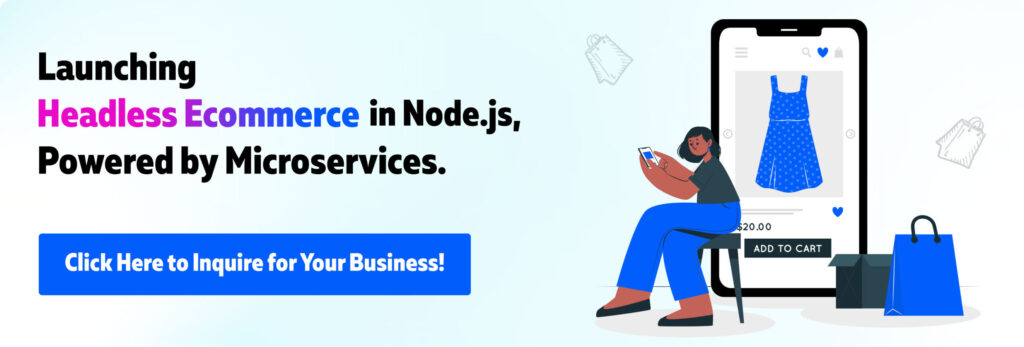
Frequently Asked Questions (FAQs) On Ecommerce Store Development
1. What is eCommerce store development?
Ecommerce store development involves creating and optimizing online platforms for businesses to sell their products or services. It encompasses designing, coding, integrating payment gateways, and ensuring seamless user experience to facilitate transactions.
2. What is ecommerce business development?
Ecommerce business development entails strategizing, planning, and executing initiatives to grow an online retail enterprise. It involves market research, product selection, branding, marketing campaigns, and customer acquisition strategies to enhance sales and profitability in the digital marketplace.
3. How do I build an eCommerce store?
To build an eCommerce store, follow these steps: 1. Define your niche and target audience. 2. Choose a suitable platform (e.g., Webnexs, Wcart). 3. Design an attractive and user-friendly website. 4. Integrate payment gateways and shipping options. 5. Upload products with detailed descriptions and images. 6. Test functionality and optimize for SEO. 7. Launch and promote your store.
4. What does an eCommerce developer do?
An eCommerce developer specializes in creating, customizing, and maintaining online stores. They are proficient in programming languages like HTML, CSS, and JavaScript, and have expertise in platforms like Webnexs, Wcart, or Shopify. Their role involves building responsive designs, implementing features, and ensuring the smooth functioning of the e commerce store development.
5. How much does it cost to build an online store?
The cost of building an ecommerce store development varies depending on factors like platform choice, design complexity, features required, and developer rates. Generally, it can range from a few hundred to several thousand dollars. Budgeting for hosting, domain registration, and ongoing maintenance is also essential for a successful online store development.
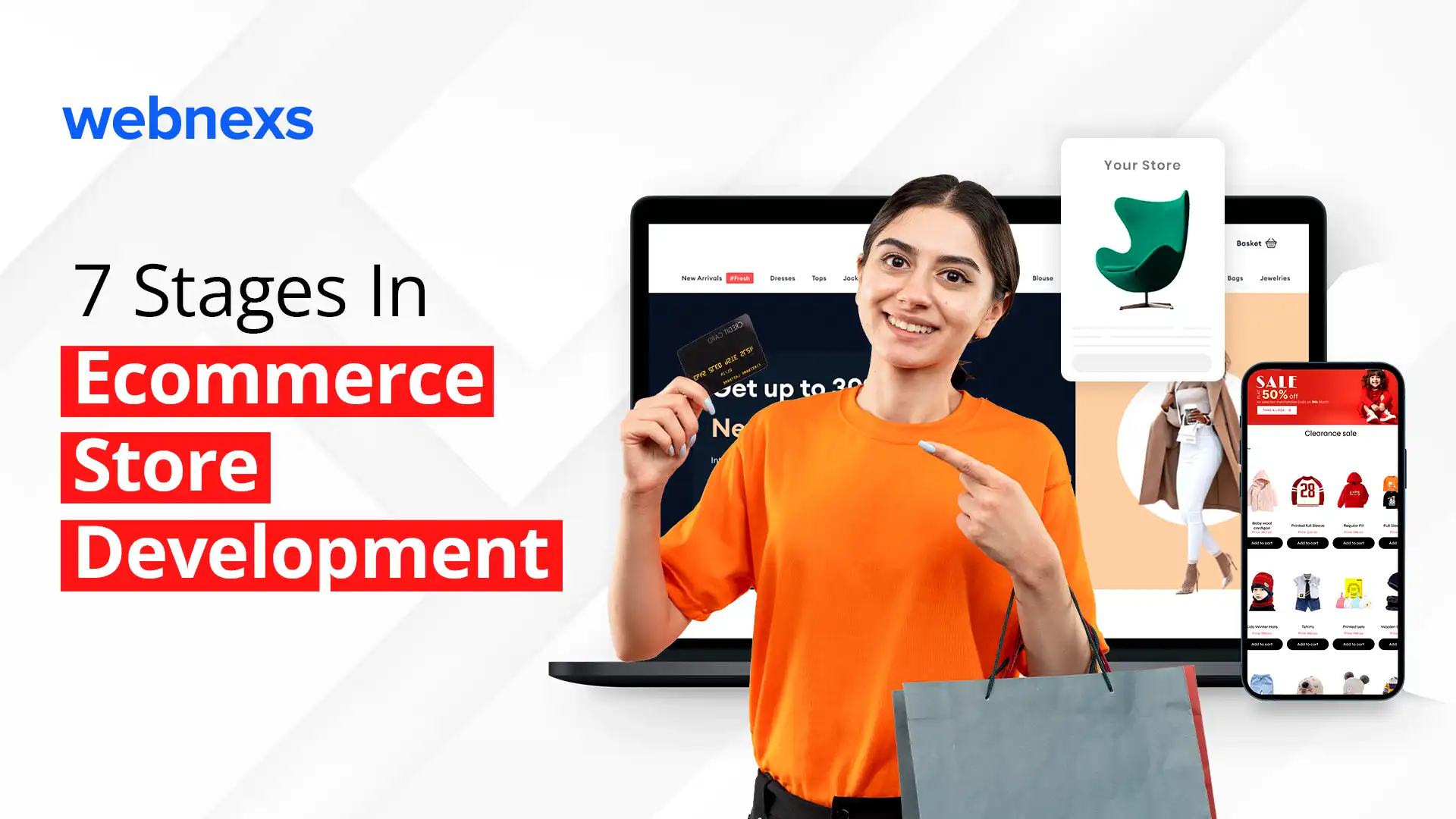
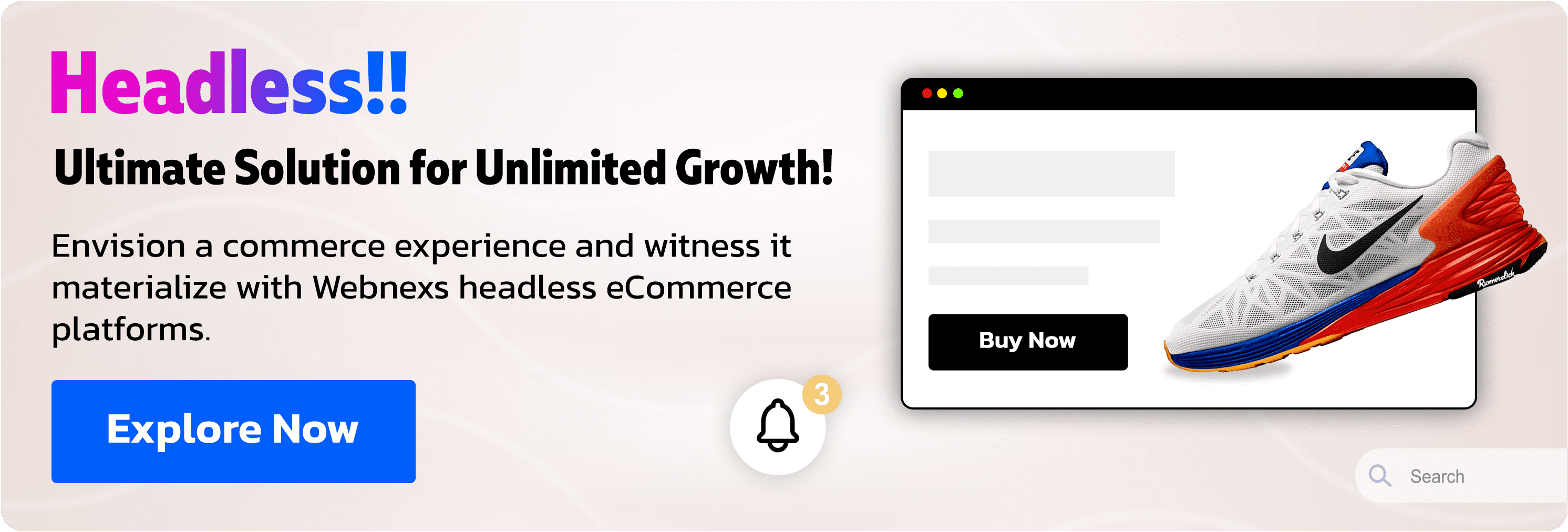

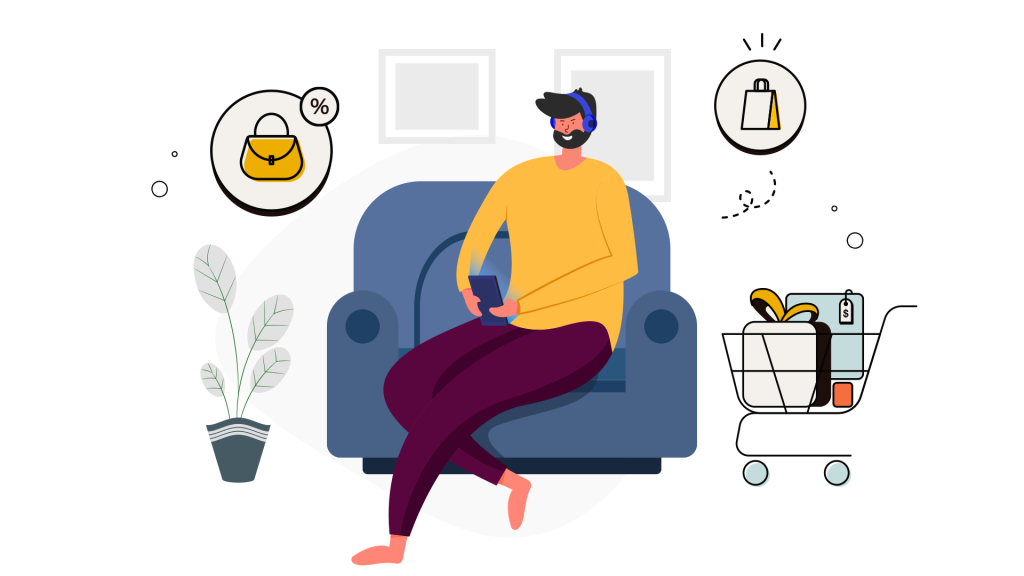
Leave a Reply